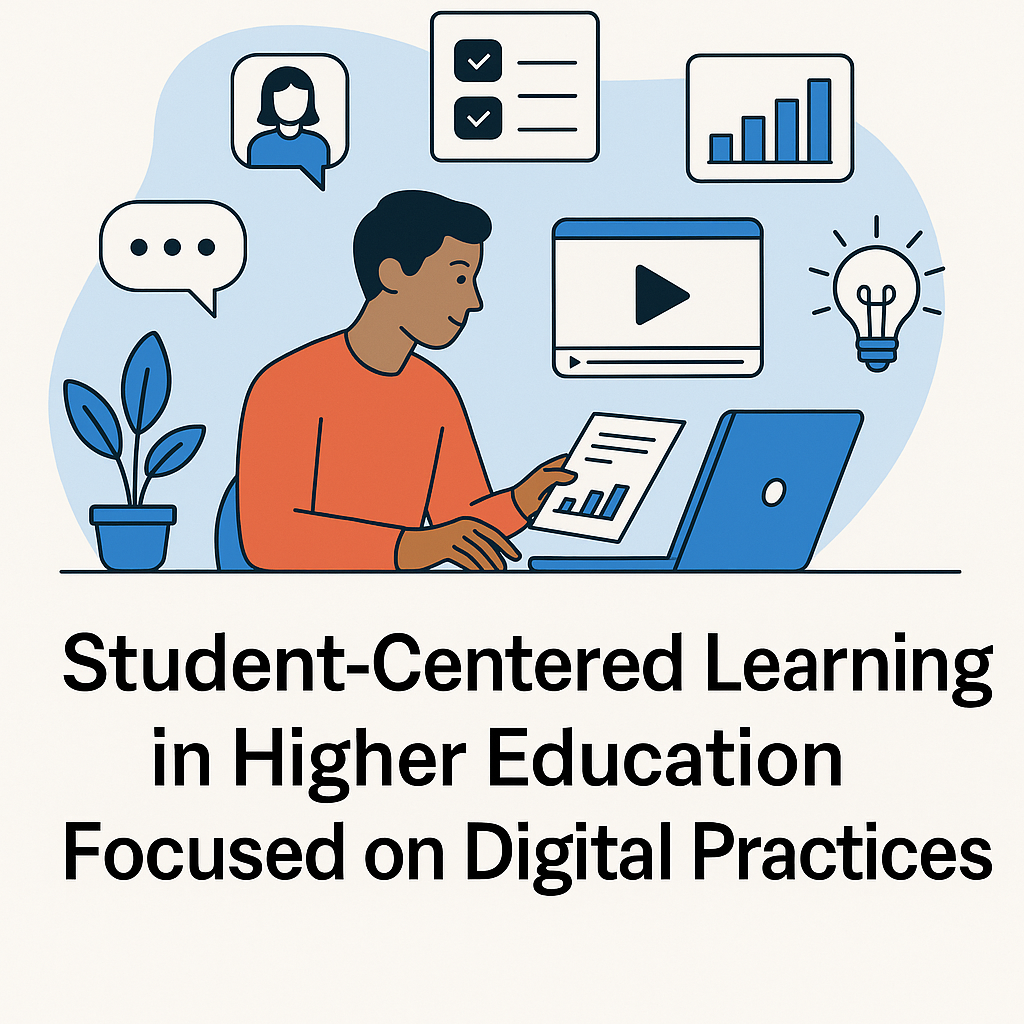Student-centered learning is an approach that puts students at the heart of the learning process, encouraging them to actively participate and make choices about how they learn best. In higher education, the push toward student-centered learning has gained momentum, particularly within digital environments. The COVID-19 pandemic catalyzed this shift, urging educators to prioritize flexible, inclusive, and interactive approaches that place students at the heart of learning. Here, we explore how digital practices can empower student-centered learning and the vital role of educators in facilitating this transformation.
Embracing Student-Centered Learning in the Digital Era
Student-centered learning fosters engagement, critical thinking, and collaborative problem-solving by acknowledging the unique needs and strengths each student brings to the learning environment. By shifting away from traditional lecture-based models, student-centered learning makes education more inclusive and adaptable—a necessity in our increasingly diverse and digital world.
The new digital landscape offers powerful tools for advancing student-centered learning. Digital platforms allow students to control their learning pace and participate in collaborative activities regardless of location, supporting a flexible learning environment. Saenen et al. (2024) underscore this by highlighting how digital tools create personalized experiences that accommodate students’ schedules and commitments, making learning more accessible for students balancing education with work or family obligations.
Key Digital Practices in Student-Centered Learning
To effectively support student-centered learning, digital practices need to extend beyond content delivery and become instruments of engagement and inclusivity.
- Flexible Learning Environments: Digital platforms enable self-paced learning, providing flexibility in both time and place. Students can revisit recorded lectures, participate in online discussions, and work on assignments when it best suits them. This flexibility fosters autonomy and helps students to integrate learning into their lives more seamlessly (Otto et al., 2023).
- Interactive and Collaborative Tools: Collaboration in online spaces is a cornerstone of student-centered learning. Tools like discussion boards, virtual breakout rooms, and shared digital whiteboards encourage interaction, building a sense of community. These digital interactions are essential for maintaining peer support and social presence, even in remote settings (Otto et al., 2023). Instructors can use these tools to replicate the interactive and spontaneous exchanges that typically happen in person.
- Diverse Assessment Methods: Moving beyond traditional exams, digital learning environments open doors for varied assessments like group projects, presentations, and online quizzes. This diversity allows students to showcase their skills and understanding in different ways, reducing pressure and catering to multiple learning preferences. This approach also aligns with Saenen et al.’s (2024) I-TPACK framework, which integrates content, pedagogy, and technology with a focus on inclusive teaching practices.
- Inclusive Design: Inclusivity is essential in digital learning, especially in addressing diverse backgrounds, varying digital literacy levels, and access challenges. Following the principles of Universal Design for Learning (UDL), educators strive to create flexible learning environments that accommodate a range of abilities, learning styles, and accessibility needs. The UDL framework emphasizes offering multiple ways of engagement, representation, and expression, allowing students to interact with content and demonstrate knowledge in ways that best suit them. In line with the I-TPACK model, educators are also encouraged to consider students’ socioeconomic backgrounds, accessibility requirements, and digital proficiency when designing online courses (Saenen et al., 2024).
Challenges in Digital Student-Centered Learning
While digital practices offer exciting possibilities for student-centered learning, several challenges must be addressed to ensure these opportunities are equitable. One of the primary issues is the digital divide, where students may lack access to necessary devices or stable internet connections. This gap hinders the inclusivity that student-centered learning aims to promote. To fight this, institutions can consider providing resources or support services to help bridge these access disparities (Otto et al., 2023).
Additionally, the shift to digital learning requires new instrumental skills from both students and instructors. Students must manage their time effectively and take responsibility for their learning, while instructors need to develop digital competencies and adapt traditional pedagogies for online settings. Training and ongoing support for educators are essential to successfully navigate this transition. Professional development initiatives can help faculty integrate digital tools effectively, supporting interactive and inclusive learning experiences.
The Educator’s Role in a Digital Student-Centered Environment
Educators play a pivotal role in fostering a digital, student-centered learning environment. As facilitators of knowledge, they must adapt to students’ unique learning needs, regularly checking in, providing personalized feedback, and encouraging student ownership of their learning. Saenen et al. (2024) emphasize that educators should cultivate open communication, support active participation, and remain responsive to students’ evolving needs.
But creating an inclusive digital learning climate also requires empathy and awareness. Educators can create a supportive learning atmosphere by using digital tools to offer real-time feedback, initiate interactive discussions, and facilitate group projects. Institutions can support these efforts by providing faculty with training on digital tools, inclusive teaching strategies, and methods for engaging students in online settings.
A Path Forward
The integration of student-centered learning with digital practices in higher education, alongside the emerging role of artificial intelligence (AI), holds immense potential to transform learning experiences. AI-driven tools can personalize learning by adapting to individual students’ strengths, preferences, and pacing needs, providing instant feedback and tailored resources that support deeper engagement and understanding. Coupled with inclusive teaching strategies, digital tools powered by AI allow educators to create flexible, interactive, and personalized learning environments like never before. By addressing challenges such as the digital divide and ensuring equitable access to these AI-enhanced resources, institutions can make transformative learning experiences accessible to all students, regardless of their background.
The shift toward digital, student-centered learning marks a significant evolution in higher education, prioritizing inclusivity and flexibility for diverse student populations. By placing students’ needs and experiences at the forefront, higher education institutions can create an environment that fosters equity and engagement, empowering students to succeed in a digital world that demands lifelong learning and adaptability.


